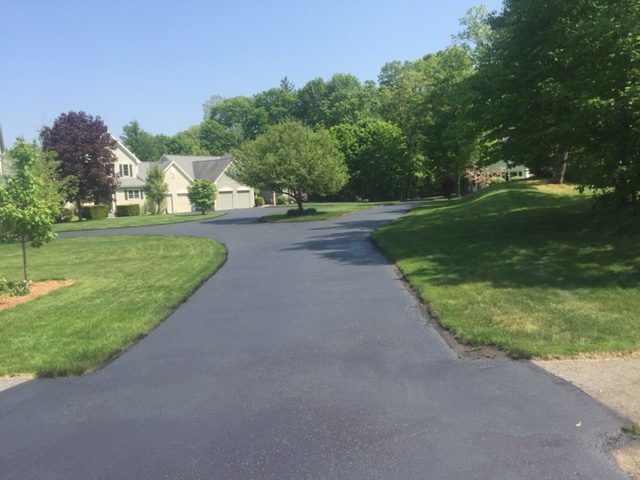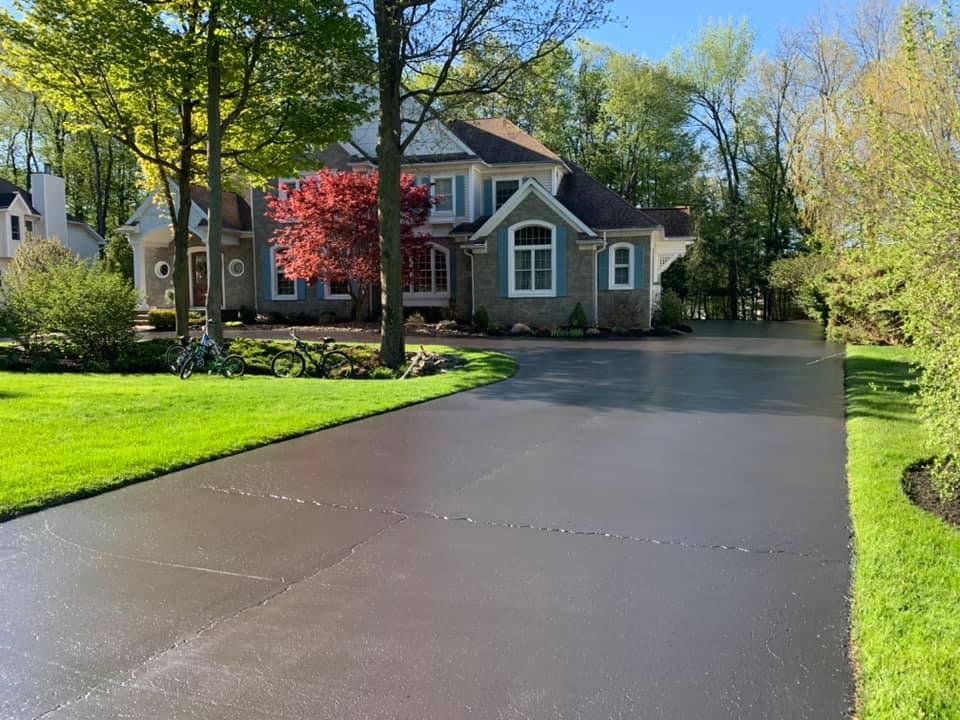Hot Mix Asphalt: A Sustainable Solution for Pavement
Warm Mix Asphalt (HMA) has emerged as a leading sustainable choice for sidewalk services, offering a myriad of ecological benefits and cutting-edge modern technologies. As the need for eco-friendly construction methods grows, checking out the nuances of HMA's sustainability can supply valuable understandings into the future of pavement remedies.
Environmental Advantages of Hot Mix Asphalt

Additionally, Warm Mix Asphalt helps to alleviate urban warm island results. Its dark color takes in sunlight, decreasing the amount of warmth mirrored back right into the environment contrasted to lighter-colored pavements. This can lower ambient temperatures in city areas, reducing the need for a/c and inevitably decreasing power usage.
Furthermore, Warm Mix Asphalt contributes to improved stormwater administration. Its permeable nature permits water to penetrate the pavement and charge groundwater materials, decreasing drainage and the risk of flooding. These environmental benefits make Hot Mix Asphalt a lasting choice for paving roads and highways.
Energy Efficiency in HMA Manufacturing
Is power efficiency an essential factor in the production of Hot Mix Asphalt (HMA)? Energy plays a substantial role in the production of HMA, affecting both expense and ecological sustainability. One vital element of energy performance in HMA manufacturing is the usage of cozy mix asphalt (WMA) technologies.
Furthermore, advancements in plant technologies have led to more energy-efficient HMA manufacturing processes. Modern plants are created with functions like recycled asphalt sidewalk (RAP) handling abilities, efficient heater systems, and improved insulation, all adding to power cost savings. By maximizing energy use in HMA manufacturing, the market can lower its carbon footprint while maintaining premium sidewalk materials. Power efficiency is, therefore, a vital factor to consider in making certain the sustainability of Hot Mix Asphalt production.
Recyclability of Warm Mix Asphalt
The recyclability of Hot Mix Asphalt (HMA) is an essential facet of its sustainability and long-term environmental effect. HMA is just one of one of the most recycled products in the United States, with over 100 million lots of reclaimed asphalt sidewalk (RAP) being reused annually in new pavement building. Reusing HMA uses numerous ecological benefits, such as decreasing the requirement for virgin products, lowering power consumption throughout manufacturing, and reducing the amount of waste sent to landfills.
The procedure of recycling HMA involves milling the existing pavement, squashing it right into smaller pieces, and mixing it with new aggregate and asphalt binder to create a recycled mix. you can try here On the whole, the recyclability of HMA plays a substantial duty in advertising lasting practices within the sidewalk market.

Long-Term Efficiency of HMA
Asphalt pavements demonstrate durability and durability over a prolonged duration, mirroring the long-lasting performance of Warm Mix Asphalt (HMA) The long life of HMA can be credited to its capability to stand up to rush hour loads, rough climate condition, and the impacts of aging. Researches have have a peek here actually shown that properly designed and effectively created HMA sidewalks can last for two decades or even more with routine maintenance. The trick to taking full advantage of the lasting efficiency of HMA hinges on making use of top notch materials, complying with ideal practices in building, and carrying out effective upkeep methods. Correct drain, regular evaluations, and prompt repairs are vital for preserving the structural honesty of HMA pavements over time. Additionally, advancements in HMA modern technology, such as making use of polymer-modified binders and warm mix asphalt, have actually further boosted the durability and durability of HMA pavements. By prioritizing top quality building and construction and maintenance methods, HMA remains to prove itself as a cost-efficient and sustainable solution for lasting pavement facilities.

HMA: Sturdiness and Sustainability
Demonstrating both longevity and sustainability, Hot Mix Asphalt (HMA) has ended up being a cornerstone in the construction of resilient pavement facilities - angled parking. HMA's durability comes from its ability to stand up to hefty loads, severe weather condition problems, and high traffic quantities, making it a trusted option for highways, freeways, and flight terminal paths. The make-up of HMA, which commonly consists of aggregates, binder, and click to investigate filler, plays a crucial function in enhancing its long life and resistance to damage
In addition, HMA's sustainability lies in its recyclability and energy-efficient production process. The ability to recycle redeemed asphalt pavement (RAP) in new HMA blends decreases the need for virgin materials and minimizes the ecological impact of sidewalk building and maintenance. Additionally, the energy effectiveness of generating HMA depends on its reduced mixing temperatures contrasted to various other pavement materials, leading to decreased energy consumption and greenhouse gas emissions.
Conclusion
In final thought, hot mix asphalt (HMA) provides a lasting option for pavement with its eco pleasant qualities. HMA's recyclability, power effectiveness in production, and long-term durability make it an environment-friendly option for road building and construction.
HMA is one of the most recycled materials in the United States, with over 100 million tons of recovered asphalt sidewalk (RAP) being reused each year in new sidewalk building.The procedure of reusing HMA includes grating the existing pavement, squashing it into smaller items, and mixing it with new accumulation and asphalt binder to produce a recycled mix.Asphalt pavements demonstrate longevity and durability over an extended period, mirroring the long-term efficiency of Hot Mix Asphalt (HMA) Furthermore, advancements in HMA innovation, such as the usage of polymer-modified binders and warm mix asphalt, have actually even more boosted the sturdiness and long life of HMA pavements. The ability to recycle reclaimed asphalt pavement (RAP) in brand-new HMA mixtures decreases the need for virgin materials and lessens the ecological impact of sidewalk construction and maintenance.